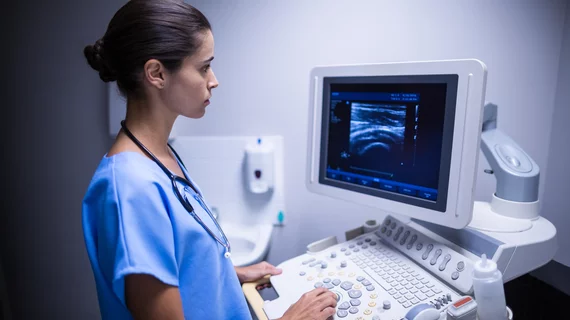O-RADS externally validated for differentiating between benign and malignant ovarian lesions
Researchers recently completed an external validation for the Ovarian-Adnexal Reporting and Data System (O-RADS) for classifying lesions as malignant or benign, for which validation had been previously lacking.
The study included 262 ovarian or adnexal lesions of 227 women who were evaluated via pelvic ultrasound at a tertiary oncology center. When comparing O-RADS categories to histopathologic outcomes of the lesions, experts found that the risk stratification system provided accurate differentiations between benign and malignant masses. This was especially true with the O-RADS 4 risk category, which yielded a sensitivity of 99%.
“O-RADS US combines a descriptor-based lexicon with evidence-based assessment data to assign an O-RADS category risk of malignancy of 1 to 5 for each lesion,” corresponding author Kalesha Hack, MD, from the Department of Medical Imaging at the University of Toronto, and co-authors explained. “O-RADS US is unique in pairing management recommendations with individual risk categories.”
Since the symptoms of ovarian cancer can often be attributed to many common conditions, such as bloating, fatigue, back pain and pelvis discomfort, it is not frequently diagnosed in its early stages. For this reason, when women are symptomatic or when ovarian lesions are identified, it is important to determine the risk of malignancy.
The American College of Radiology (ACR) developed O-RADS to provide a risk stratification and management system for ovarian lesions based on specific imaging characteristics with the intent to guide patients and providers in treatment decisions, whether surgical or nonsurgical.
There are very few studies that have performed external validations of O-RADS. And to the authors’ knowledge, there are no current studies that have examined the system’s efficiency at distinguishing between malignant and benign lesions using surgical and nonoperative treatment as the reference standard. In addition to completing this validation, the researchers also sought to determine if incorporating acoustic shadowing as a benign finding improves performance.
Out of 262 ovarian lesions included in the analysis, 187 were benign and 75 were malignant. O-RADS yielded an AUC of 0.91 for distinguishing between benign and malignant tumors. When acoustic shadowing as a benign finding was added, the AUC increased to 0.94.
It is important to note that the ultrasound exams included in this study were completed by sonographers in North America. Other prior studies validating O-RADS were conducted by clinicians in Europe, the authors explained. This is yet another reason further research was necessary — to determine whether the accuracy of O-RADS remained consistent when the expertise level of the ultrasound operator varied.
“The Ovarian-Adnexal Reporting and Data System US risk stratification and management system distinguished between benign and malignant adnexal masses with high diagnostic accuracy, facilitating triage to stratified management options in a tertiary referral oncology center,” the authors wrote. “Further studies in low-risk community-based settings are required to ensure the generalizability of the system.”
The detailed research can be viewed in Radiology.
Related ultrasound imaging content:
These ultrasound features predict ovarian cancer
Ultrasound features that indicate difficulty of vaginal childbirth
Ultrasound images reveal how smoking before conceiving impacts embryonic development
These ultrasound features distinguish between COVID vaccine-related and malignant adenopathy
Signs of autism can be spotted on routine prenatal ultrasound, research shows

